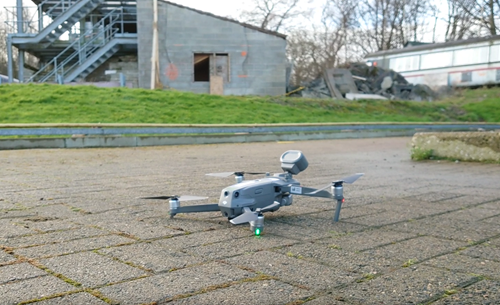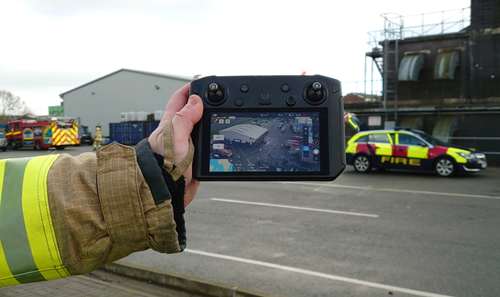Merseyside Fire and Rescue Service launched their capability to deploy not one, but two operational Drones to live incidents, under a myriad of conditions and rescue scenarios as part of their Integrated Risk Management Plan 2021-24.
The introduction of operational Drones as a deployable asset to an ongoing incident forms just one part of MFRS’ forward thinking and bold Integrated Risk Management Plan 2021-24, to develop a balanced approach to reducing risk within the community.
The drones bring additional support to crews at incidents by providing aerial imagery, thermal imagery, additional lighting, video recording, communications, and the ability to search wide areas and read hazard labels from a distance.
Group Manager Phil Byrne said, “From arriving on scene, the pilot can have the drone in the air within 5 minutes.
“Detachable payloads include a spotlight camera and a loud speaker which can provide instructions to people who may be trapped or give instructions to residents who may be on balconies or in other inaccessible areas to evacuate.
“The technology also has the benefit of Thermal Imagery, so we can switch the camera from its normal vision to Thermal Imagery, where you can see hot or cold targets.
“So if you’ve got people missing, people in the water, or thermal radiation from a fire, it can pick that up.”
Piloted by a member of the Service's designated drone team possessing industry standard qualifications, this innovative eye in the sky has the potential to gather unparalleled intelligence and situational awareness at ongoing incidents, in real time, that could save lives.
On request, Fire Control will mobilise a UAS (unmanned aircraft systems) Remote Drone Pilot(s) with the Drone asset readied for deployment.
The Drone can support operations across a variety of incident types by providing extensive aerial imagery to enhance situational awareness, thermal imagery, lighting and communications broadcast.


GM Byrne continued, “The eye in the sky gives any Incident Commander a much-improved situational awareness, so not only would they be able to see the fire or the incident they are dealing with but much further afield, including premises that the incident may be affecting and any road networks.
“We could stream that footage further afield to other Commanders or other agencies who may need to see that footage who aren’t necessarily at scene but could have an important part to play in resolving that incident.”
By utilising state of the state-of-the art technology to provide unrivalled on the spot insight to an Incident Commander at scene, Merseyside Fire and Rescue Service is at the forefront of innovative firefighting practices to ensure that MFRS keep the communities across Merseyside safe.
